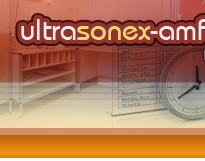

 |
 |
|
Главная страница Напряженность электрического поля (тиристор) Larrabee R. D. (Ed.). Neutron Transmutation Doping of Semiconductor Materials, Plenum, New Yorl<, 1984. Matsushita Т., Aoki Т., Ohtsu T. Highly reliable high-voltage transistor by use of SIPOS process IEEE Trans. Electron. Devices. 1976. Vol. ED-23. P. 826- 829- Meek R. L., Seidel T. E., Cullis A. G. Diffusion geltering of Au and Cu in silicon J. Electrochem. Soc. 1975. Vol. 122. P. 786- - 796. ft/Veese J. (Ed.). Proceedings of the Second International Conference on Neutron Transmutation Doping in Semiconductors, 1978, Plenum, New York. Miller M. D. Differences between platinum and gold doped silicon power devices IEEE Trans. Electron. Devices. 1976. Vol. ED-23. P. 1279-1283. Miller M. D., Schade H., Nuese C. J. Use of platinum for lifetime control in power devices IEEE lEDM Tech. Digest, 1975. P. 180-183. Mimura A., Oohayashi M., Furakami S., Momma N. High-voltage planar structure using Si02-SIPOS-S102 film IEEE Electron. Device Lett., 1985. Vol. EDL-6. P. 189-191. Misawa Y., Hachiko H., Нага S., Ogawa Т., Yagi H. Surface charges in a zinc-boron silicate glass/silicon system J. Electrochem. Soc. 1981. Vol. 128. P. 614-616. Nakamura M., Kato Т., Oi N. A study of gettering effect of metallic impurities m silicon Jap. J. .ppl. Phys. 1968. Vol. 7. P. 512-519. Paxman D. H.. Whight K- R. Observation of lifetime controlling recombination centres in silicon power devices Solid State Electron., 1980. V 1 23. P. 129-132. Platzoder K., Loch K. High-voltage thyristors and diodes made of neutron irradiated silicon IEEE Trans. Electron. Devices. 1976. Vol. ED-23. P. 805-808. Prough S. D. Knobloch J. Solderless construction of large diameter silicon power devices IEEE Industry Appl. Soc. Meeting, l§77. P. 817-821. Rai-Choudhury P., Selim F. A., Takei W. J. Diffusion and incorporation of aluminium in silicon J. Electrochem. Soc. 1977 Vol. 124. P. 762-766. Ravi K. V. Imperfections and Impurities in Semiconductor Silicon, Wiley, .Mew York, 1981 Rosnowski W. Aluminium diffusion into silicon in an open tube high vacuum systems J. Electrochem. Soc. 1978. Vol. 125 P. 957- 962. Roy K. Silicon epitaxy for power devices. Semiconductor Silicon 1973/Eds H. K- Huff and R. R. Burgess. Electrochemical Society Inc., Princeton. Sawko D. C, Bartko J. Production of fast switching power thyristors by proton irradiation IEEE Trans. Nucl. Sci. 1983. Vol. NS-30. P. 1756-1759. Schmidt P. F. Contamination fret high temperature treatment of silicon or other materials J. Electrochem. Soc. 1983. Vol. 130. P. 196-199. Selim F. A., Chu C. K., Johnson J. E. .Annealing effects for semiconductor power devices IEEE Electron Device Lett. 1983. Vol. EDL-4. P. 218-220. Siber D., Maeder H. The effect of gold concentration gradients on thyristor switching properties IEEE Trans. Electron. Devices. 1976. Vol. ED-23. P. 366-368. Smith B. J. Ion implantation range data for silicon and germanium device technologies- Adam Hilger Ltd., Bristol, England. Sun Y. E. Lifetime control in semiconductor devices by electron irradiation lEE Industry Appl. Soc. Meeting. 1977. P. 648-658. Sze S. M. Physics of .Semiconductor Devices. Wiley, New York, 1981. P. 245-311. Tada A., Nakagawa Т., Hagino H. Improvement in trade off between turn off time and other electrical characteristics of fast switching thyristors Jap. J. Appl. Phys. 1982. Vol. 21. P. 617 - 623. Temple V. A. K., Holnoy F. W. Optimising carrier lifetime profile for improved trade off between turn off time and forward drop IEEE Trans. Electron. Devices. 1983. Vol. HD-30. P. 782- 790. Van Iseghem P. M. P-i-n epitaxial structures for high power devices IEEE Trans. Electron. Devices. 1976. Vol. ED-23. P. 823- 825. к гл. 6 Blicher А. Thyristor Physics. Springer-Verlag, New York. 1976. P. 247. Dethlefsen R., Egli A., Feldman K. T. Feasibility of an insulating heat pipe for high voltage applications IEEE Trans. Power Appl. Sys., 1982. Vol. PAS-101. P. 3001-3008. Finney D. The Power Thyristor and Its Applications. McGraw-Hill, 1980. P. 168- 180. Jaumot F. E. Thermoelectric effects Proc. IRE, March 1958. P. 539-554. Neidig A. Modules with solder contacts for high power applications IEEE Conf. Rec. IAS Ann. Meeting, 1984. P. 723-728. Soffer J. Freon-cooled choppers for trolleybus applications Proc. Motorcon. 1981. Conf. Chicago, 1981. P. 602-618. Yamada Y., Itahana H., Okada S. Evaporation cooling system for chopper control Hitachi Review. 1980. Vol. 29. P. 25-30. СОДЕРЖАНИЕ Предисловие .......................................................................................................... 3 Список обозначений ............................................................................................. 5 Глава 1, Основные сведения о тиристоре....................................................... Ю 1.1. Введение ................................................................................................. Ю 1.2. Характеристики тиристора ................................................................... 10 1.2.1 Характеристики по напряжению................................................ 11 1.2.2. Характеристики потоку............................................................... 12 1.2.3. Включение и выключение............................................................. 12 1.2.4. Тепловые характеристики ........................................................... 14 1.3. Конструкция тиристора......................................................................... 14 1.4. Типы тиристоров и их применение....................................................... 17 1.4.1. Применение.................................................................................. 17 1.4.2. Типы тиристоров.......................................................................... 18 1.5. Выбор тиристора ................................................................................... 20 1.5.1. Параметры по напряжению................................................... 20 1.5.2. Параметры по току...................................................................... 21 Глава 2. Принцип действия тиристора........................................................... 23 2.1. Введение ........................,........................................................................ 23 2.2. Тиристор в закрытом состоянии........................................................... 23 2.2-1. Обратное закрытое состояние.................................................... 23 2-2.2. Прямое закрытое состояние........................................................ 26 2-2-3. Шунтирование катодного эмиттера..................S........................ 29 2.2.4. Поверхностные эффекты............................................................. 32 2.2.5. Механизмы повреждения............................................................ 39 2.3. Характеристики включения .................................................................. 40 2.3.1. Время задержки........................................................................... 41 2,3-2. Этап нарастания тока.................................................................. 42 2.3.3. Распространение плазмы............................................................ 44 2.3.4. Л/Л-стойкость ............................................................................ 47 2.4. Открытое состояние............................................................................... 48 2.4.1. р - i - п-диод ............................................................................ 49 2.4.2. Модели тиристора в открытом состоянии................................... 52 2.5. Выключение............................................................................................ 7 Глава 3. Проектирование тиристоров............................................................. 6 3.1. Выбор полупроводникового материала ............................................... 61 3.2. Время жизни неосновных носителей заряда......................................... 64 3.3. Конструирование структуры ................................................................ 66 3,3-1. р-база (Р2) ..................................,............................................... 66
|
|
© 2000 - 2025 ULTRASONEX-AMFODENT.RU.
Копирование материалов разрешено исключительно при условии цититирования. |